The week before my country stopped having a government and started having a king, I went searching for the Great Unconformity. I drove cliffside five thousand feet high, gazing down at crushed cars that didn’t make it.
The Great Unconformity is evident only in its absence. It does not tell the whole story but highlights missing chapters — if you already know enough to know that they are missing. It is lost time in its most literal sense, deleted history bracketed in rock.
I was looking for the Great Unconformity because I wanted assurance I could find it — that I was still sharp, still nobody’s fool. I’m going to need those skills, because our present is dying a little more every day.
We are heading into a future without a past.
That is nothing new for autocracies. Pol Pot proclaimed history irrelevant and started his rule at Year Zero. Stalin pioneered the deletion of dissidents a half century before photoshop. The US, the British, and Israel peddled tales of “lands with no people” while murdering the indigenous people inhabiting them.
Every founding national myth contains a lie. The cruelest lies are those that succeed through erasure.
As the US lurches to autocracy, I turn to geology, because it is an honest broker. It retains every painstaking detail: rocks that grow an inch each millennium, fossils encased in stone. Every rock is a coffin, every coffin is a book.
Geology is an ally at the end of the world. It assures you there was a world, there is a world, and you are part of it.
Except, of course, for The Great Unconformity.
* * *
The Great Unconformity is a mystery: a gap of missing time in the geological record between 100 million and 1 billion years long. Traces of it are found in rock formations around the world. There are competing theories as to how The Great Unconformity happened — erosions, explosions. The evidence of absence looks different depending on where you go.
My husband and I began our search for The Great Unconformity by accidentally entering the Colorado National Monument. This would seem impossible, seeing as the Colorado National Monument is 20,000 acres of canyons with sheer cliff walls, but we managed to arrive with oblivious aplomb.
The culprit was a battered guidebook of “America’s Most Scenic Drives” that has sat in the backseat over our twenty years of marriage. I flipped through it on a whim while my husband drove, checking out the Colorado section.
“It says here,” I read, “that if we go to Grand Junction, drive six miles past a cattle guard onto a dirt path, turn onto something called Divide Road, and find the creek that flows two ways, that we’ll have a perfect view of The Great Unconformity!”
My husband agreed that this was a great idea. A mountaintop is a bad place for whims.
We made it to Grand Junction, failed to find a cattle guard, lost GPS, and wound up on the entry road to the Colorado National Monument. We paid the entrance fee, figuring our dirt path maybe got turned into a national monument sometime after the guidebook was published. We were Missourians in Colorado, high on altitude and delusion.
“Do you know where the Great Unconformity is?” we asked a cashier at the gift shop.
“The what?”
“The Great Unconformity!” we cried.
“What does it look like?”
“Nothing!” we said. The Seinfeld of geology.
“Then why are you looking for it?”
“Because we want to see things that aren’t there!”
To the relief of the clerk, a park ranger appeared, confirmed that there was indeed something called The Great Unconformity in the park, but that it was “like, everywhere — there, only not there. You’ll know it when you don’t see it. It’s hard to explain.”
At the Colorado National Monument, The Great Unconformity appears — or doesn’t — as a gap between the brick-red Chinle Formation of 210 million years ago, and the dark gray igneous rocks from the Precambrian era of 1.7 billion years ago.
What happened in between? Who knows. Two layers of time sit on top of each other, like everything’s cool, like there’s not an invisible billion-year mystery gap. All is red or brown or grey and laden in shadow. We were supposed to notice when something looked off and use our knowledge of what looks normal to render that judgment.
“I think I see it,” my husband said at every bend.
“Where?”
“It’s that thing.”
“What thing?”
“You know, the grey, the red — that thing!”
“Oh yeah, that’s it! Or under it. Or above?”
“Or that’s not it at all,” he said sadly.
“Why are you so obsessed with finding nothing when there’s so many things to look at?!” our son demanded from the backseat. He was alone; our daughter was at camp. He was stuck on a road trip with Vladimir and Estragon for parents.
“Finding nothing is important,” I said, “because it’s not there, and we don’t know why! So we need to see it, and then we’ll know.”
“Know what?”
“Why there’s nothing instead of something. Or how. How nothing replaced something.”
“Who cares?”
“I’ll care when our time is labeled nothing, too,” I said, but only in my mind.
Out loud, I told him to get good pictures of the cliffs to show his sister.
Maybe he’d find The Great Unconformity, and capture it, and I’d rest, knowing it could be done.
* * *
We were supposed to seek out the abnormal, but Colorado is too stunning for normality. Our search for the unseeable made us examine everything.
Bulbous red rocks lined low like a city, a tower jutting out like a middle finger mocking our quest, a car lying trapped between rocks in a canyon. It was hard to avert my eyes from that one. Was the driver looking for The Great Unconformity too? Did they survive? When I looked up car wrecks in the Colorado National Monument later, I found too many to pinpoint the car we saw, and my heart broke a little.
Colorado National Monument makes a loop. We found ourselves back in Grand Junction, searching again for the elusive Divide Road. We took yet another wrong turn and ended up on the Unaweep-Tabeguache Scenic Byway. The route included places called Paradox and Disappointment Valley. It seemed like a good candidate to find The Great Unconformity.
The area near the Byway was the ancestral home of the Ute people. A plaque told us that Unaweep was their word for “canyon with two mouths”. Though we saw the two creeks, we could not find the mysterious spot where they each suddenly started flowing in opposite directions. It was a rumor on a road sign, another futile quest.
The byway was lonesome and ethereal, looping through canyons and devoid of drivers. We passed strange sites, like a massive 19th century miner’s trestle called The Hanging Flume, and the town of Uravan, where the uranium for the first atomic bomb was mined. This was a road of abandoned places and doomsday devices. Surely, The Great Unconformity would emerge, and I would know it on sight.
My husband and I recognize Precambrian Rock: we are Missourians, and we are nerds. But we were dazed by Colorado; it was too shiny and new, like switching from black and white to color TV. What was supposed to lie above the Precambrian layer of a rock wall? Were we chasing shadows or tracking time? Was there a difference?
I spotted the ruins of a house on the side of the road. There was little left to it, just a sandstone entryway, but I recognized the style.
In the Ozarks, there is a place called Ha Ha Tonka where a cursed family built a cliffside mansion in the early 1920s that burnt down in 1942. Its ruins stand today like Missouri’s version of the Colosseum. I have been visiting Ha Ha Tonka for decades because my favorite tree is there.
It is important, when everything is collapsing, to have a favorite tree.
We learned later that the Colorado sandstone domicile was called The Driggs Mansion. A homesteader built it for his wife during World War I and left when she vetoed the plan, finding southwest Colorado too desolate. They departed right as the Spanish Flu hit, and I wondered if she regretted her decision later. It seemed like a good place to hide out.
We were alone, my husband and son and I, on a highway to ourselves in a state we did not know, on a quest for nothing. There was no better way to live. Behind the ruins of the Driggs Mansion were soaring rocks that had long outlasted it, ancient cliffs beyond our timeline.
“Look,” said my husband, pointing, “Is that—?”
“Let’s say it is,” I answered, “because this is where it should be.”
* * *
I was gone for ten days, exploring rural Colorado and New Mexico. During that time, I barely had internet and rarely got news. While I was gone, cultural touchstones of my youth were deleted from existence.
The website for MTV, which housed over two decades of music journalism and clips, was erased, even from the internet archive. The archives of Comedy Central followed, including the shows that had informed my generation about the Iraq War and Bush administration corruption: The Daily Show and The Colbert Report. They were gone, and their real-time documentation of war crimes was gone too.
The deletions followed a spate of erasures that had been gaining pace since 2022, ranging from old websites to unreleased movies to songs and shows that can be removed from a streamer whenever the CEO feels like it. The deletion of pop culture has been accompanied by rapid closures of news outlets recording recent history and ongoing crises, as well as the hijacking of social media networks by oligarchs who can delete accounts without recourse. This is all happening at once.
I have wondered what they are trying to cover up. Gaza? Trump? But I no longer think that it’s anything specific.
What they hide matters less than creating a world in which future generations do not even know what to seek. A silo in which even your scream is just an echo, fine-tuned by an algorithm that never lets you escape a machine’s perception of yourself.
They are deleting the American experience, snapping the strands that have held Americans together regardless of geography or age or race or political predilection. As I wrote in my book They Knew, the pandemic sliced through every shared aspect of American life — holidays, sports, movies — leaving us with no national pastime but politics, which meant we were held together by a web of lies.
That loss of cohesion did not change when administrations did. In fact, the stratification became worse, with few moments of pop culture unity, to the point that the ones that hit — Tracy Chapman and Luke Combs’ duet, for example — made the nation weep in gratitude.
Meanwhile, corporations taking in trillions proclaim they can no longer “afford” to retain digital pop culture archives, long after many Americans threw away their analog versions. They are leaving us, little by little, with nothing solid or shared.
This may sound trivial, but it is not. There is a vast difference between America, the bureaucratic entity, and America, the country.
America, the country, is bound by touchstones: food, sports, holidays, television, music, movies. These are uniquely American creations, often introduced by people who historically lacked representation and rights, and treasured over centuries by a large and diverse nation.
America, the country, is filled with Americans who create special things that America, the bureaucratic entity, find threatening — and usually try to control. They fear the organic, improvisational America, which lives free of the top-down version of America they want to impose.
Now they are trying to destroy American culture altogether.
They are creating a cultural Great Unconformity, a gap in collective memory. Powerbrokers want a layer of artificial nostalgia, and atop that a layer of contrived future — and all the beauty and glory of what human beings created in between eliminated. They want their mechanical layers welded together in an unnatural form, with real American life missing so thoroughly that even its absence will be difficult to detect.
Will anyone notice? Or will enough time pass that people will lose the ability to realize when something important is missing?
Will future generations, raised in a digital desert, know their own history — politically, socially, culturally? Or will they be handed an AI past, one that seems a little off, a little unnatural, but shrug off the feeling — after all, where could they possibly look up the truth?
That’s why I have decided I did see The Great Unconformity after all. It is too painful to imagine I stared straight at it and still managed to miss it in the end.
* * *
Thank you for reading! This newsletter is funded entirely by voluntary paying subscribers. That allows me to keep it open to everyone, and I don’t want to paywall in times of peril. If you like what I do, please subscribe!
Note to regular readers: This has been a tumultuous week. I will address recent events like the debate, the election, and the Supreme Court ruling in due time. I am contemplating setting up a Q & A section on current affairs but am still working out the logistics. Thanks!
Colorado National Monument. Photo by my son.
Maybe this is The Great Unconformity?
Or is it this?!
Or is it somewhere in here???
Never mind, I’m leaving! Choose your path wisely…




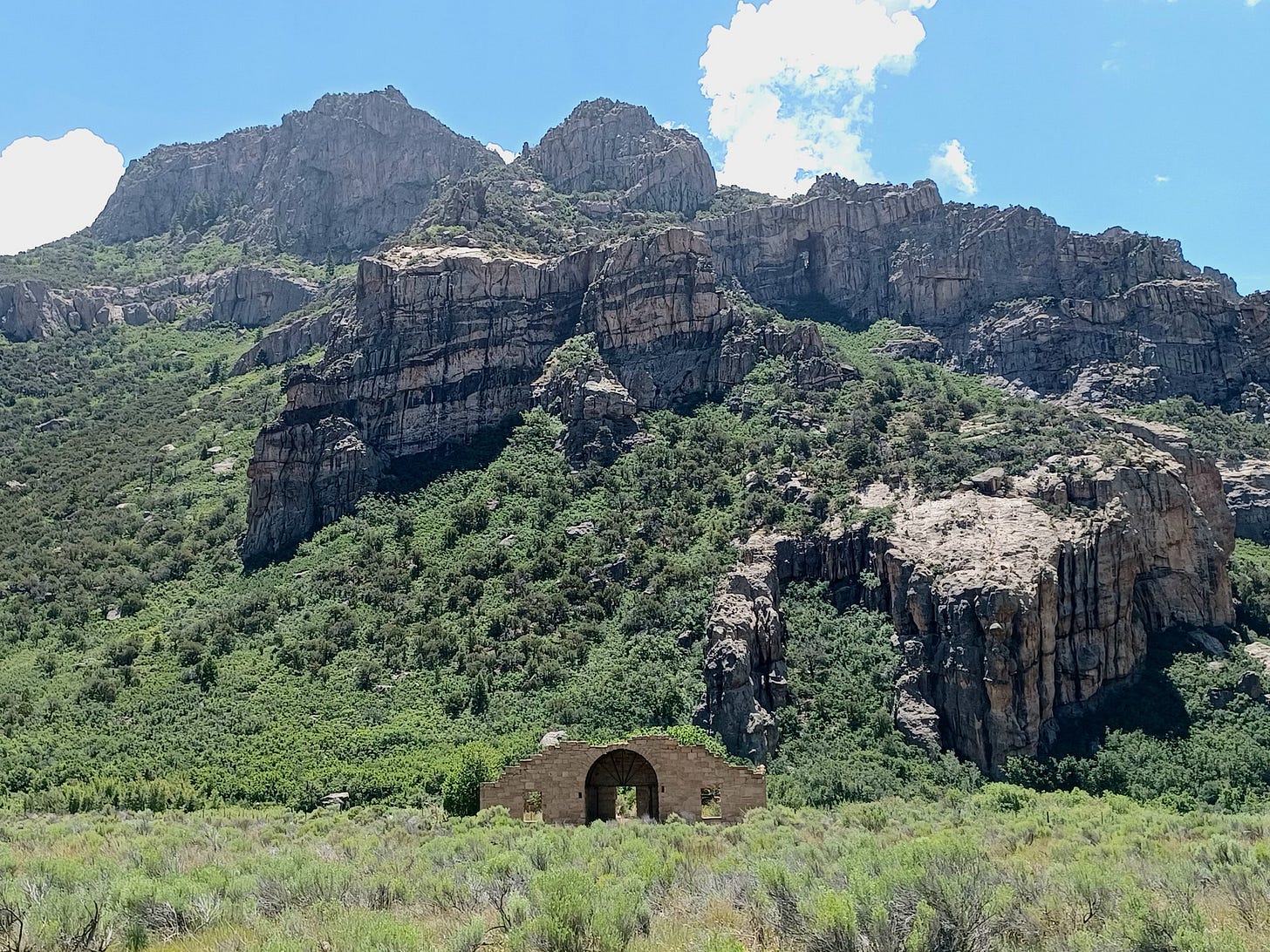
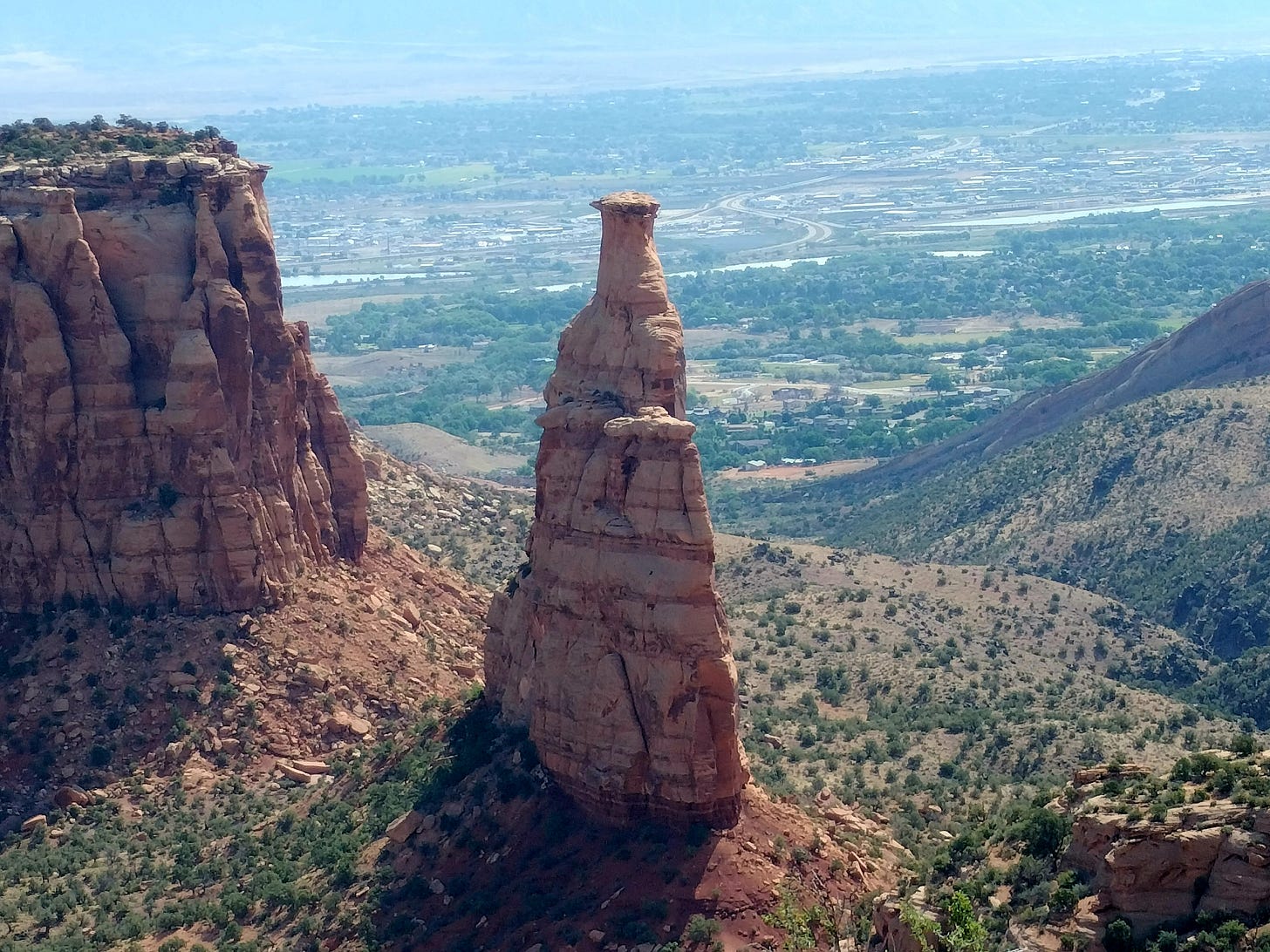
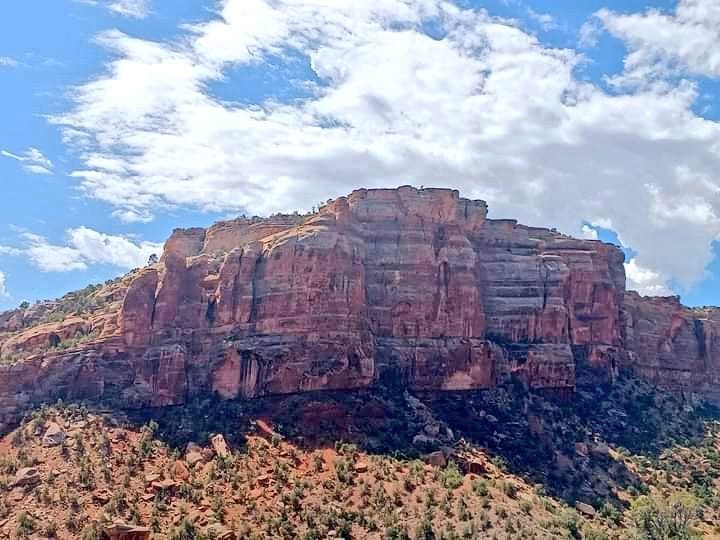
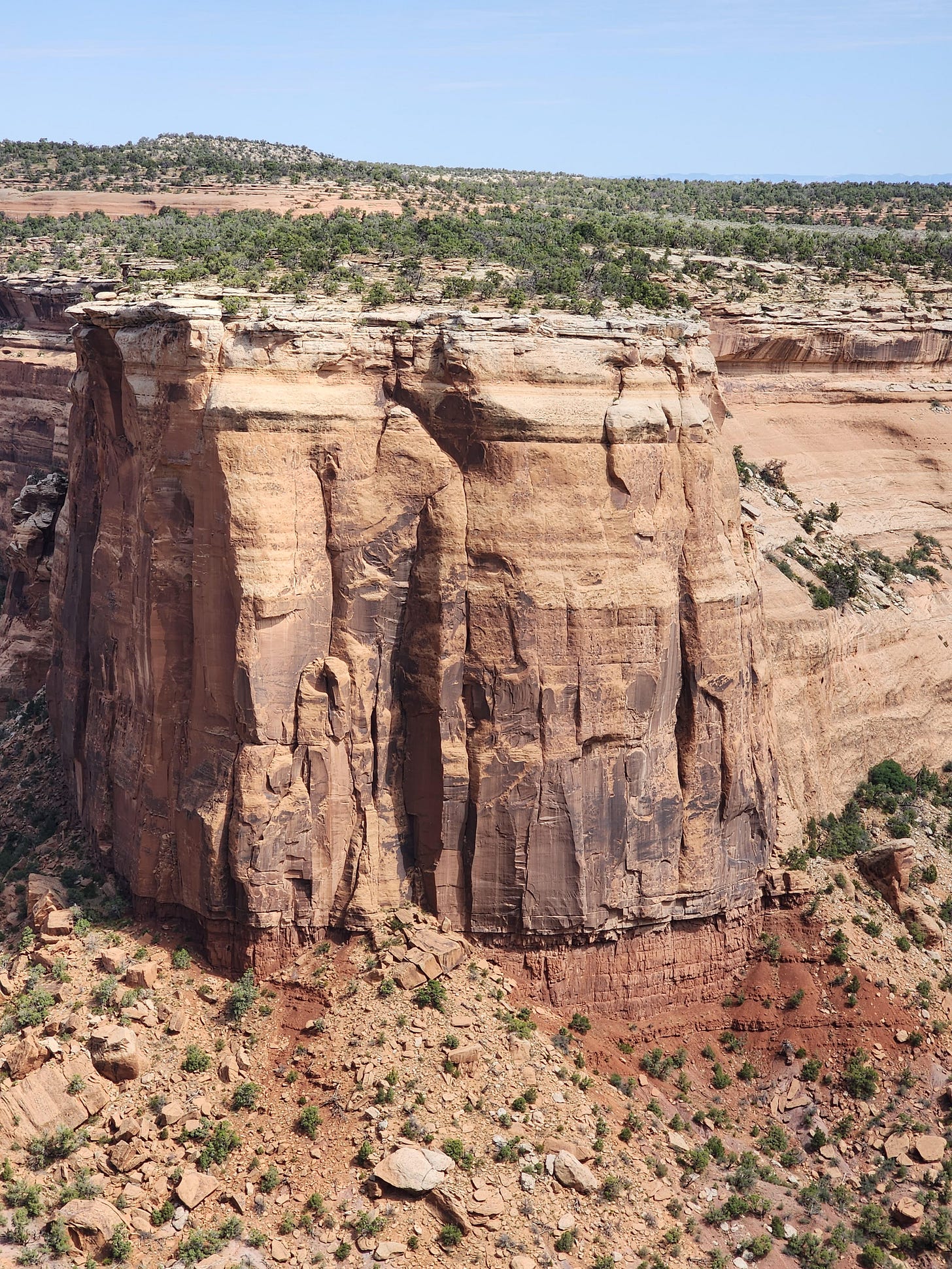
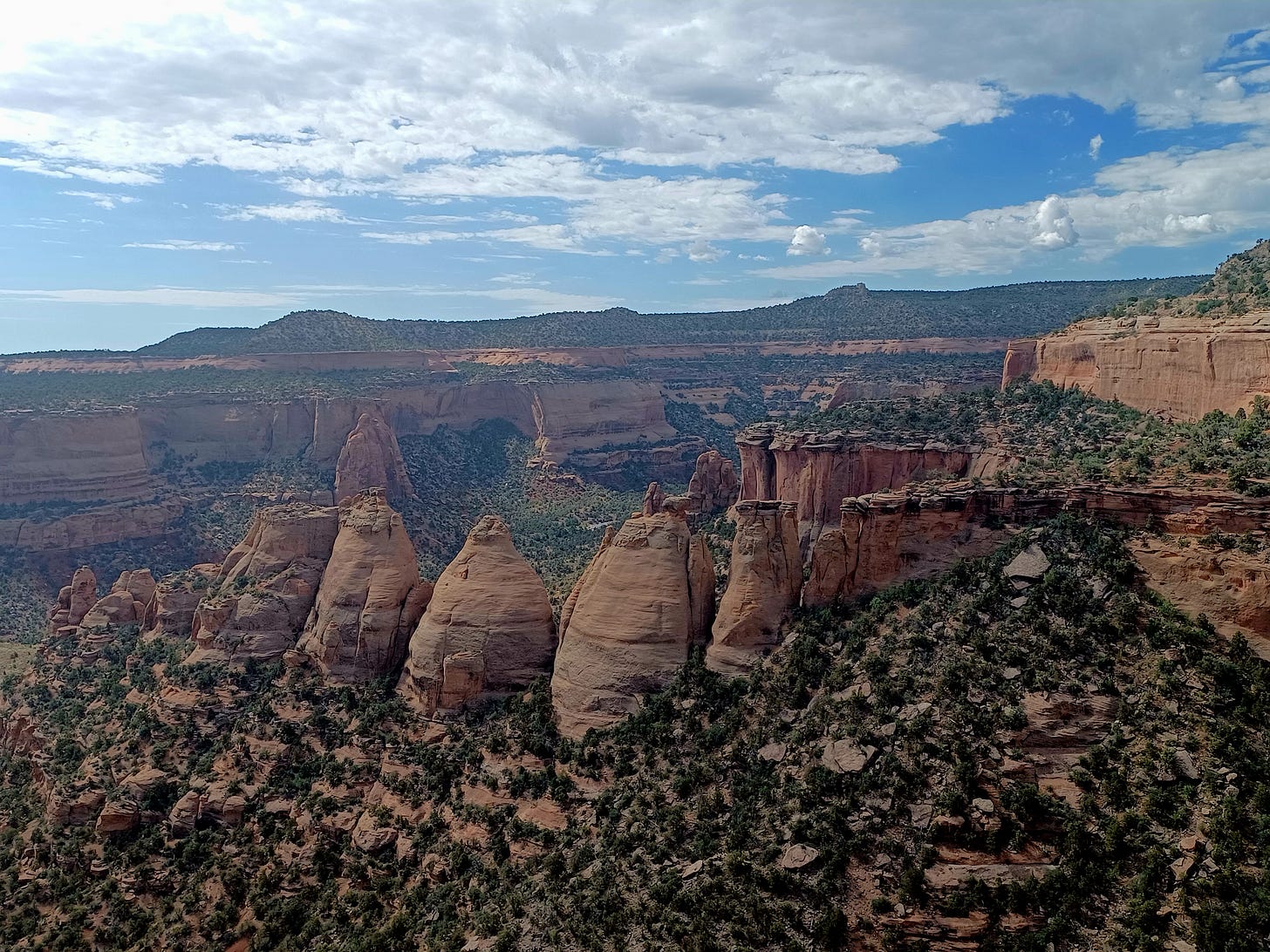

Wow — I stopped reading and started over so I could read this out loud - just to myself. The writing (as usual) is magnificent and the message, though devastating, is so powerful. Thank you.
An episode of Nova tells the mystery of the doomed 19th century British that disappeared on their expedition to discover and map the Northwest Passage.
Halfway through the episode the narrator mentions the Inuit people who inhabit the islands and the northern edge of the North American continent. Immediately, I thought, "I bet they know what happened." For a hundred and 170 years, nobody bothered to listen.
With the modern technology of the 21st century, the wreckage was found. Right where generations of oral history said it was.
Sharpen your storytellers, folks, we have history to undelete.